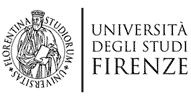Homeland Security
Homeland Security is a key theme of the scientific and technological development in these years. It is divided into numerous sectors, from border control, to land control for forecasting hydrogeological risk, from anti-terrorism to support for operations in the presence of environmental disasters. In all these scenarios the telecommunications component is pre-eminent. Both for the development of ad hoc sensor networks, and for the identification and tracking of non-cooperating targets.
This latter application is of interest both in the case of the control of indoor and outdoor critical areas of limited size (airports, hospitals, shopping centers), and border control. In both cases the possibility of purely passive sensors, which then receive intentional or unintentional emissions from the possible targets without emitting electromagnetic energy in turn is particularly interesting as it allows the sensor to detect the target without being detected by the latter.
Being the emitted sigal unknown a priori, one must scan the space on the widest band possible, hence ultra-wideband antennas are a must. These are particular structures designed to keep both the radiation pattern and the input impedance stable with respect to the frequency.
This kind of antenna, for instance bowtie, sinuous and Vivaldi, are used for many applications and in particular for Direction of Arrival (DoA) estimation, with the aim of evaluating the position of the signal source. In this context not only the antenna has to have a wideband but also the pattern shape stability is very important.
The aim of our research work is the study and designed of wideband antenna with small dimensions. In recent years, particular attention has been given to the log-periodic antennas and their feeding network.
Figure 1 - Fields immediately above a sinuous ultra-wideband antenna at various frequencies


